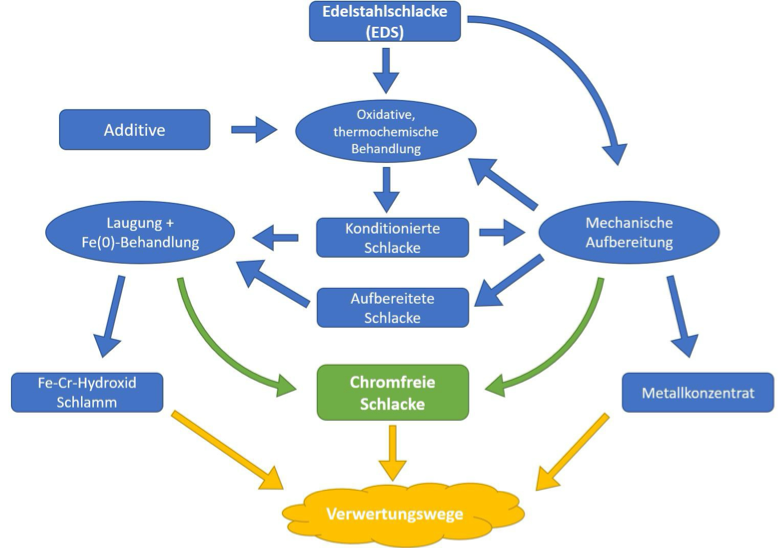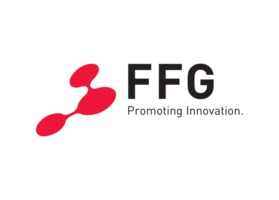Overall approach
The project CreeS aims to develop an innovative, sustainable, and resource-conserving process for circular economy in the steel and cement industries. The goal is to convert the previously largely unused material stream of stainless-steel slag (SSS) into a valuable secondary raw material for cement production.
SSS is a byproduct of stainless-steel production. The high heavy metal content (e.g., chromium) makes direct material recycling in the cement industry impossible. As a result, SSS is currently only used to a limited extent or must even be disposed of at high costs. At the same time, there is a growing demand in the cement industry for alternative raw materials to conserve natural resources and reduce CO2 emissions.
The project CreeS focuses on a thermochemical treatment of SSS to oxidize the chromium-containing components and make them water-soluble. In a subsequent leaching process, the chromium is then extracted from the slag.
The key process steps are:
1. Thermochemical treatment of SSS with oxygen supply > oxidation of the chromium-containing components into a water-soluble form.
2. Leaching of the slag > extraction of water-soluble chromium oxide.
3. Investigation of the purified SSS as a secondary raw material for the cement industry > testing of material properties and applicability in building material production.

The project adopts a holistic approach by combining analytical, modeled, and experimental methods to assess technological and economic feasibility. The successful implementation of CreeS is expected to bring the following benefits:
- Reduction of stainless-steel slag disposal > lowering of disposal costs.
- Substitution of natural raw materials in the cement industry > preservation of primary resources.
- Reduction of CO2 emissions > contribution to climate neutrality in the building materials industry.
- Strengthening of the circular economy in Austria > promotion of sustainable production processes.
The project will be carried out in close collaboration between industry and research partners to validate the technological implementation and develop an economically viable solution.
Objectives
The main goals of the project are:
- Development of a technological concept to produce chromium-free SSS.
- Enabling the use of DDS as a secondary raw material in the cement industry.
- Saving natural resources through the substitution of primary raw materials.
- Reducing CO2 emissions through circular economy and sustainable process design.
- Increasing resource efficiency in the steel, cement, and construction industries.
PROJECT TIMELINE:
1 May 2025 – 30 April 2028
FUNDING SCHEME:
The CreeS project is funded by approximately 80 % within the framework of the Circular Economy and Production Technologies 2024 program. This program is coordinated by the Austrian Research Promotion Agency (FFG) and financially supported by the Federal Ministry for Innovation, Mobility, and Infrastructure.
PROJECT CONSORTIUM:
Starting with the project coordinator, the consortium is composed as follows:

 DE
DE EN
EN